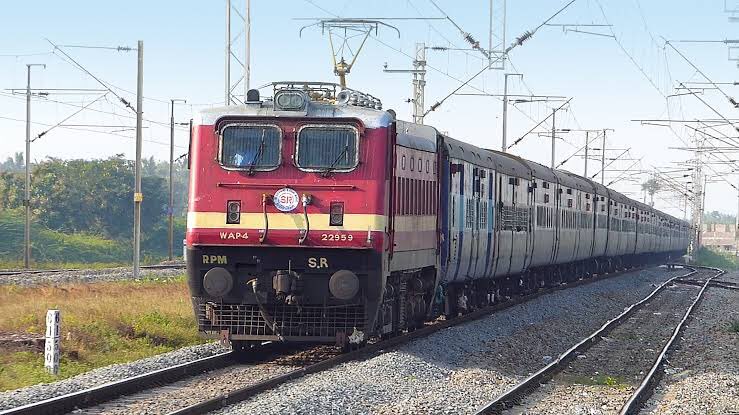The recent stampede at New Delhi Railway Station, which tragically claimed the lives of 18 people and injured many more, serves as a grim reminder of the pressing need for Indian Railways to prioritize passenger safety.While the incident occurred due to a sudden surge of passengers heading to Prayagraj for the Maha Kumbh Mela, it highlights systemic issues that must be addressed to prevent future tragedies.
Understanding the Causes:
Several factors contributed to the stampede, including:
Overcrowding: The station was heavily congested with passengers, particularly those traveling to Prayagraj for the Maha Kumbh. This surge in passenger volume overwhelmed the existing infrastructure and crowd management systems.
Lack of Crowd Management:
The railway authorities appeared ill-prepared to handle the massive influx of passengers. There was a lack of adequate crowd control measures, such as proper barricading, clear signage, and sufficient personnel to guide and manage the crowd.
Panic and Rumors: The situation was exacerbated by rumors of free trains to Prayagraj, which led to a further surge of passengers. The ensuing panic and chaos made it difficult to control the crowd, ultimately leading to the stampede.
Inadequate Infrastructure:
The foot-overbridges connecting platforms 14 and 15, where the stampede occurred, were reportedly narrow and congested. This inadequate infrastructure contributed to the bottleneck and made it difficult for passengers to move safely.
Lessons Learned and Recommendations:
The New Delhi Railway Station stampede offers several crucial lessons for Indian Railways, emphasizing the need for a comprehensive overhaul of passenger safety protocols and infrastructure.
Here are some key recommendations:
Enhanced Crowd Management:
Indian Railways must develop and implement robust crowd management strategies, particularly during peak seasons and special events like the Maha Kumbh.This includes deploying trained personnel for crowd control, installing CCTV cameras for real-time monitoring, and using technology to predict and manage passenger flow.
Improved Infrastructure: Investing in infrastructure upgrades is crucial to decongest railway stations and ensure passenger safety. This includes widening foot-overbridges, constructing additional platforms, and improving signage and lighting.
Effective Communication:
Clear and timely communication is essential to prevent panic and misinformation. Railway authorities should use public address systems, social media, and other channels to disseminate accurate information to passengers and prevent the spread of rumors.
Strict Enforcement of Safety Regulations:
Indian Railways must enforce safety regulations strictly and hold accountable those responsible for lapses in safety protocols. Regular safety audits and inspections should be conducted to identify and address potential hazards.
Collaboration and Coordination:
Effective coordination among various stakeholders, including railway authorities, local administration, and law enforcement agencies, is crucial for ensuring passenger safety. Joint efforts should be made to develop and implement comprehensive safety plans.
Passenger Education: Educating passengers about safety procedures and guidelines is essential to promote a culture of safety. Indian Railways should conduct awareness campaigns to inform passengers about safe boarding and deboarding practices, emergency procedures, and crowd management protocols.
Moving Forward:
The New Delhi Railway Station stampede is a tragic reminder of the challenges Indian Railways faces in ensuring passenger safety.
However, it also presents an opportunity to learn from past mistakes and implement meaningful changes. By prioritizing passenger safety, investing in infrastructure upgrades, and adopting a proactive approach to crowd management, Indian Railways can prevent future tragedies and ensure a safer travel experience for millions of passengers.
In addition to the above, Indian Railways should also consider the followings:
Developing a comprehensive disaster management plan:
This plan should outline procedures for handling emergencies, including stampedes, fires, and other unforeseen events. It should include clear roles and responsibilities for different stakeholders, as well as protocols for communication, evacuation, and medical assistance.
Investing in technology:
Technology can play a crucial role in improving passenger safety. For example, AI-powered systems can be used to predict and manage passenger flow, while CCTV cameras with facial recognition capabilities can help identify and track suspicious individuals.
Conducting regular safety drills:
Regular safety drills should be conducted at railway stations to prepare staff and passengers for emergencies.These drills should simulate various scenarios, including stampedes, fires, and bomb threats.
An Independent safety regulator should be established
An independent safety regulator should be established to oversee safety protocols and ensure accountability. This regulator should have the authority to investigate accidents, conduct audits, and impose penalties for safety violations.
The New Delhi Railway Station stampede is a wake-up call for Indian Railways. It is time to move beyond reactive measures and adopt a proactive approach to passenger safety. By implementing the recommendations outlined above, Indian Railways can create a safer and more secure travel experience for millions of passengers.
( Inputs from Agencies )

